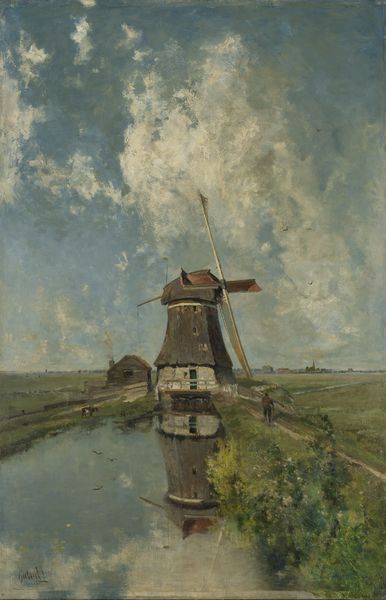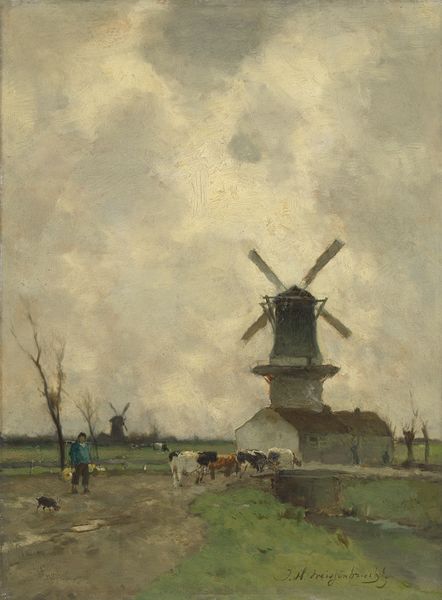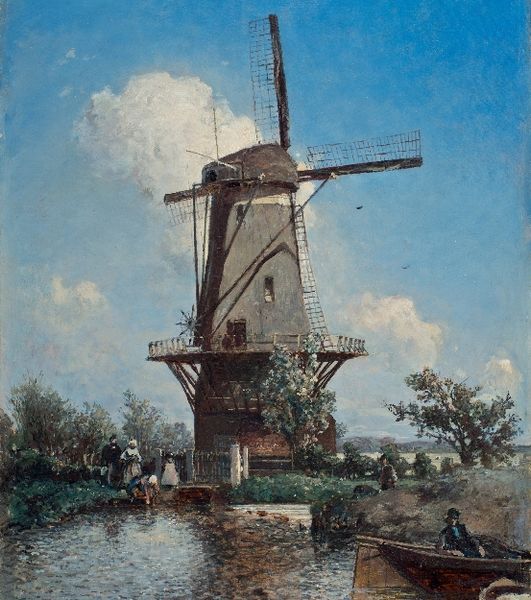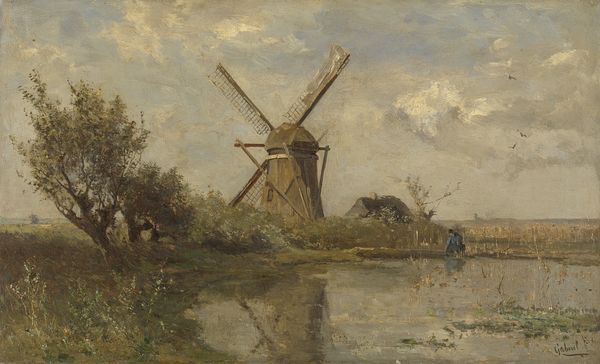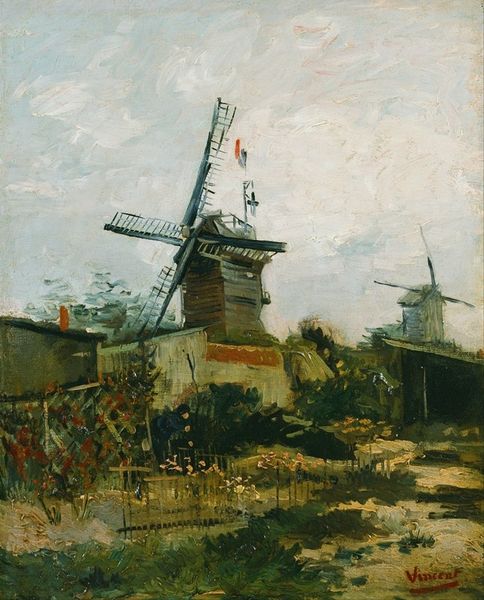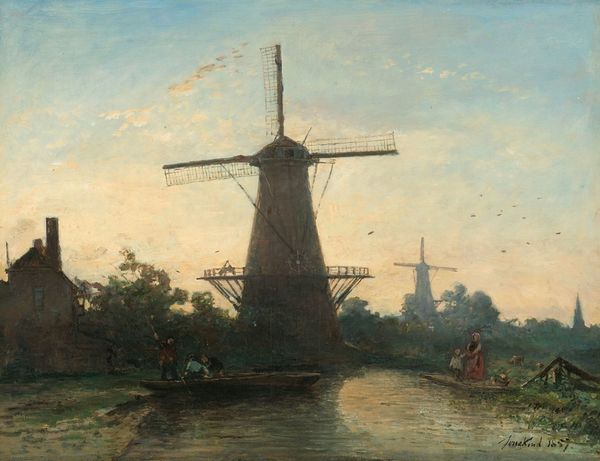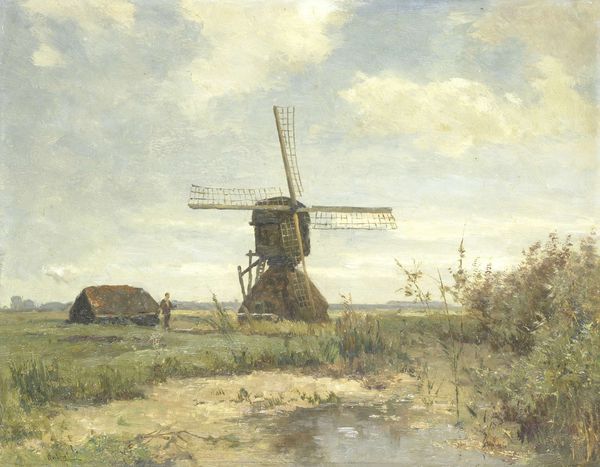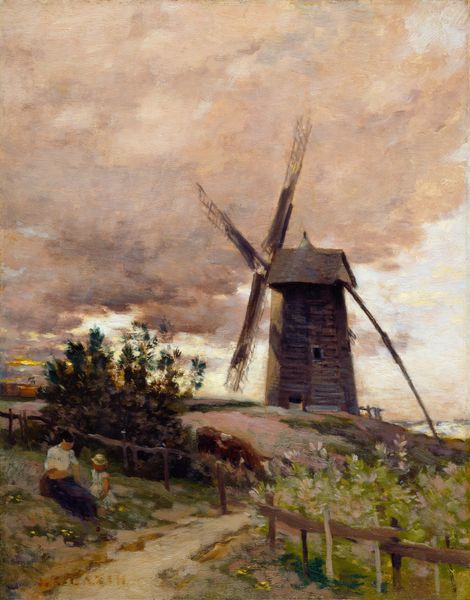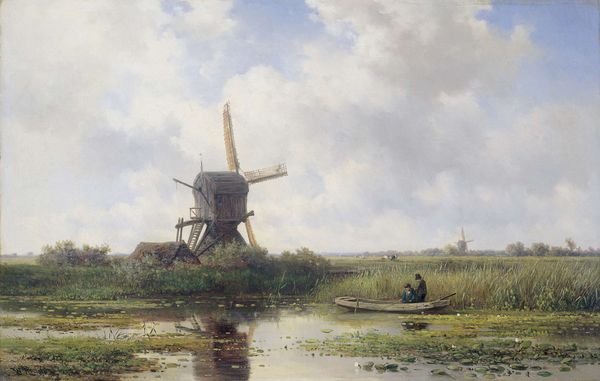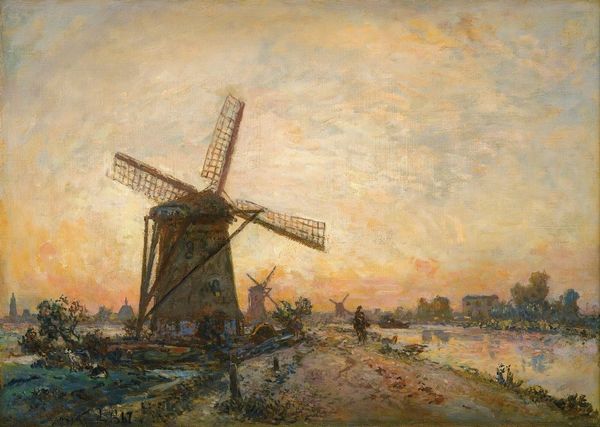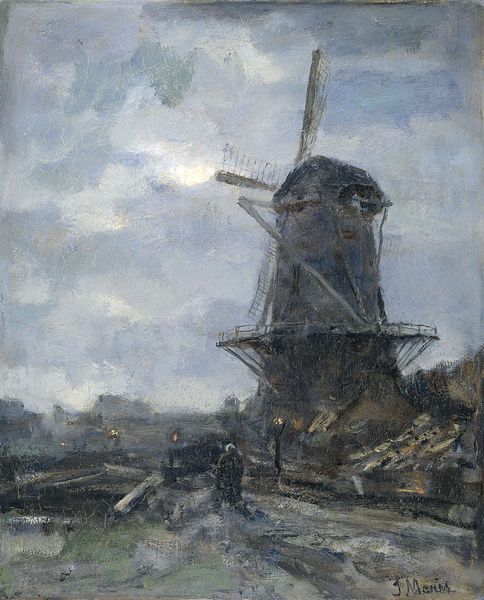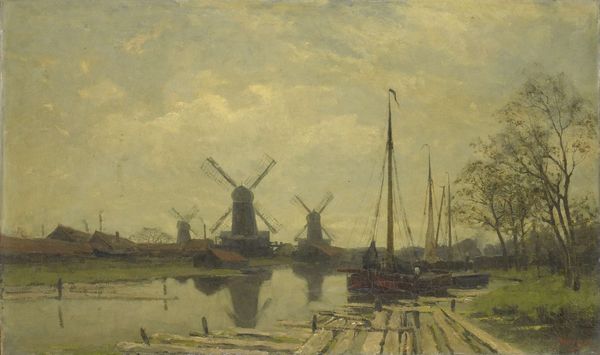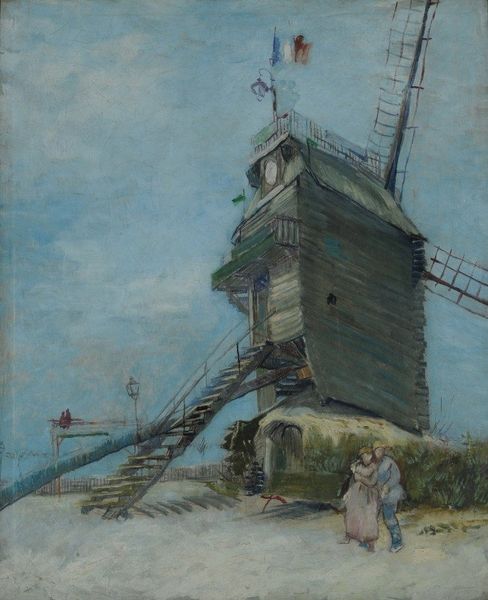
Dimensions: height 59.5 cm, width 50 cm, thickness 3.3 cm, depth 12 cm
Copyright: Rijks Museum: Open Domain
Curator: Jacob Maris’s “The Windmill,” dating from around 1880 to 1886, offers a glimpse into the Dutch landscape. Painted with oil on canvas, it’s currently housed here at the Rijksmuseum. Editor: It's rather somber, isn't it? The heavy sky seems to weigh down on the entire scene. The palette is muted, almost monochromatic, dominated by grays and browns. It makes you consider how materials constrain the freedom of form. Curator: Well, a windmill traditionally represents prosperity and industry in Dutch art. The imposing structure here is arguably a symbol of the Dutch Golden Age, standing as a sentinel overlooking daily life, which suggests more than mere melancholy. It is a source of hope. Editor: But notice the brushstrokes, the texture. It appears as if Maris applied the paint alla prima, directly and without layers of elaborate preparation, in the open air—you can feel the labor, his deliberate material decisions, not just picturesque symbols. Curator: Indeed, that impressionistic approach evokes a specific atmosphere. Think of windmills and you consider a struggle with natural forces as well. Beyond a depiction of scenery, it implies endurance and resilience. We are also seeing Romanticism emerging through this painting as well, in how landscape is conveying strong feelings. Editor: Certainly. The romantic appeal is interesting as it conceals from direct view the daily routines of workers visible along the water's edge. From this point of view the windmill is almost obsolete; they labor along a waterway transporting goods. Consider it then: is Maris trying to conceal or reveal, is it a eulogy or a prophecy? Curator: The symbolism is there, undoubtedly, and is a way to explore ideas about how Dutch society has been constructed on resource extraction through the management of water, while you bring another crucial perspective on production and materials. It also reflects his deep engagement with nature's cycles, something deeply ingrained in Dutch cultural memory. Editor: I still find myself drawn back to those visible brushstrokes, the very palpable quality of the paint. It seems less a nostalgic idealization and more an honest attempt to document how technology has created both the means and the context to change the lives of the working classes and working process itself. Curator: That makes me consider what Maris wished to suggest. So, both materials and images, working together. Thank you for illuminating the materiality beyond the image's apparent calm!
Comments
No comments
Be the first to comment and join the conversation on the ultimate creative platform.
